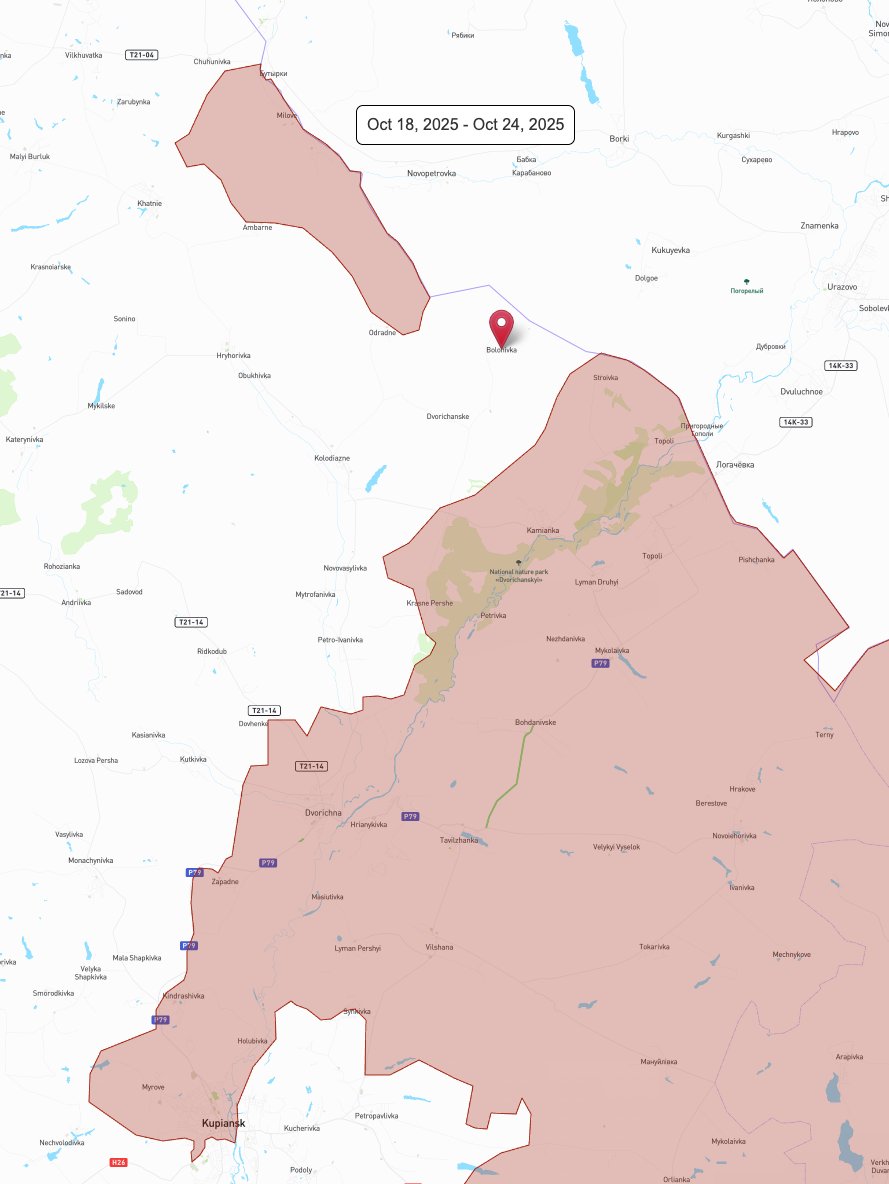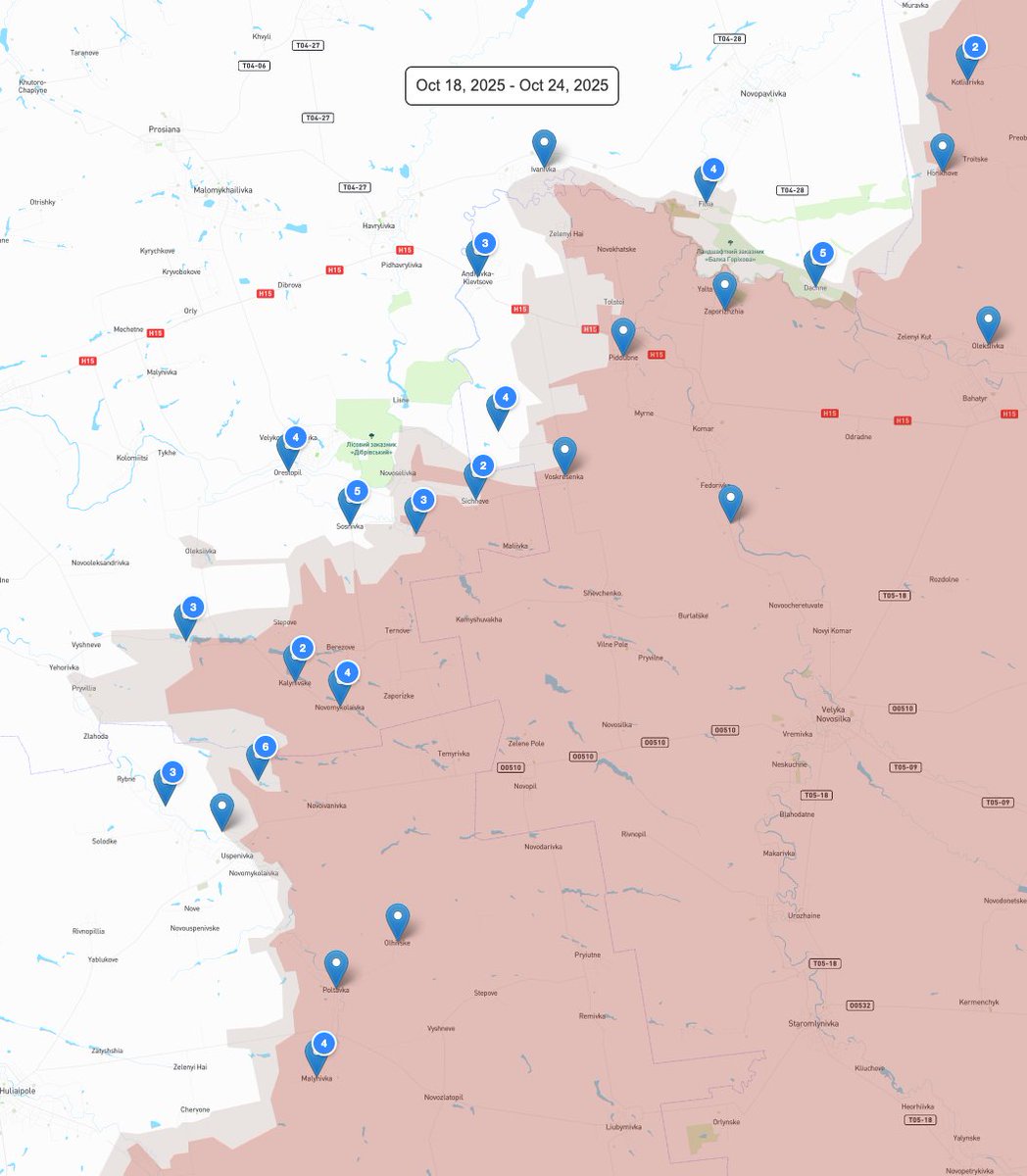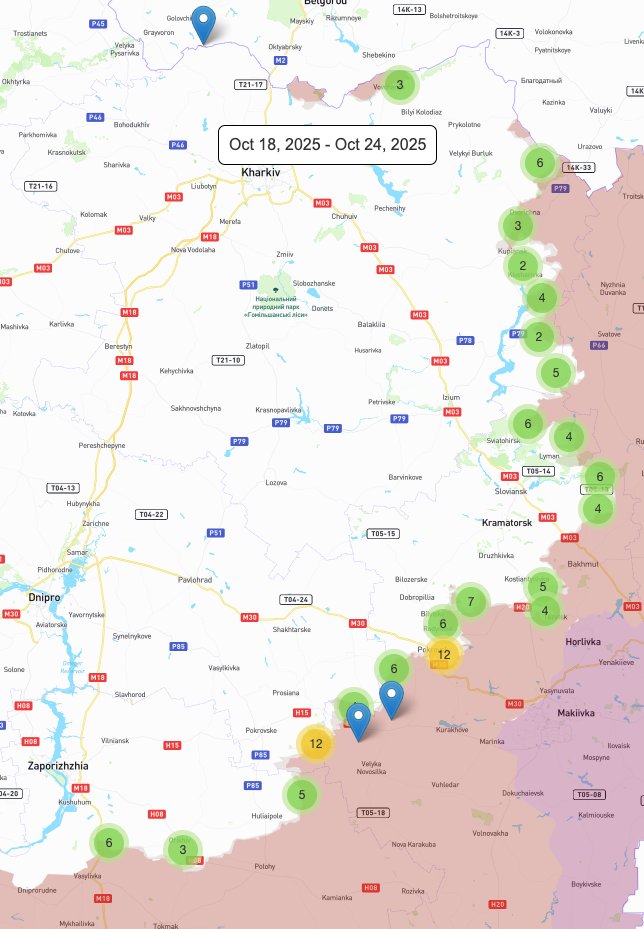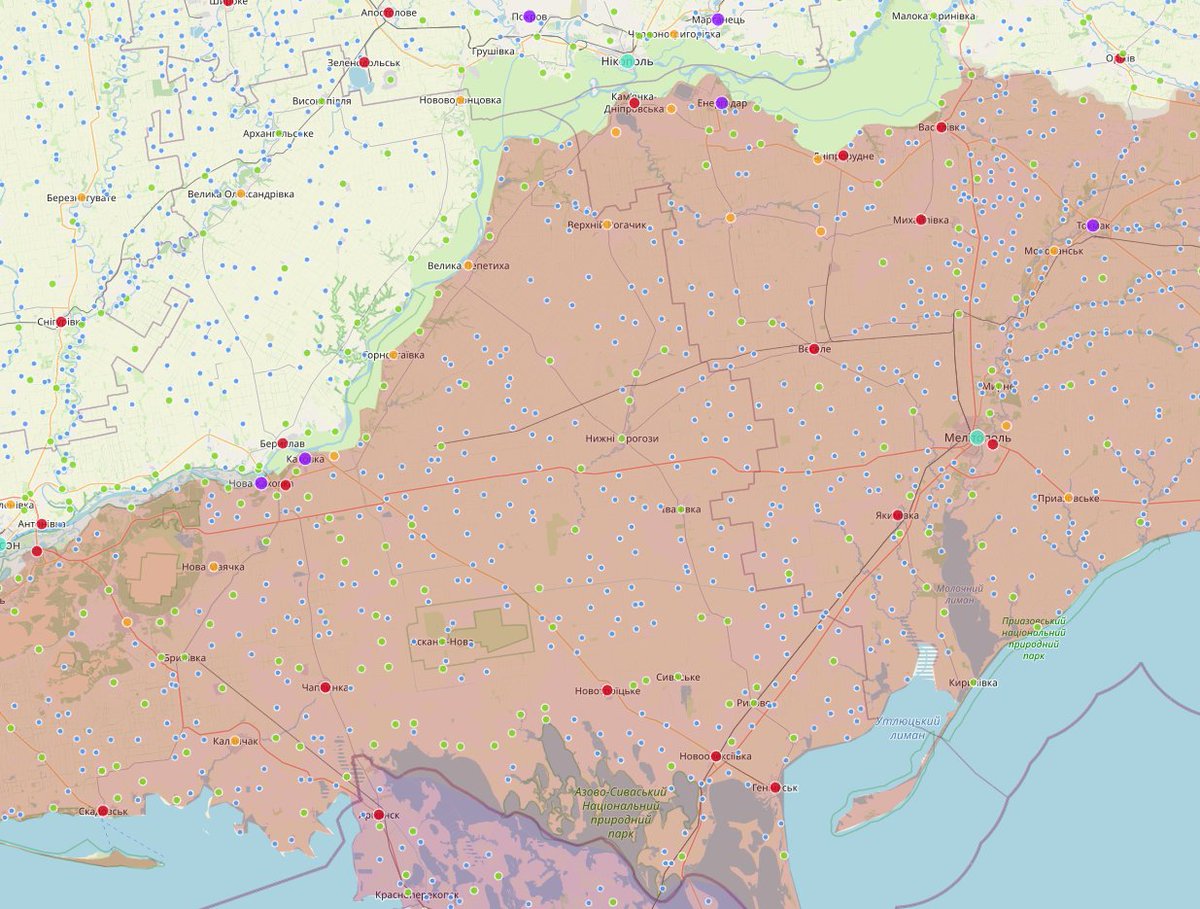#Map Donbas after Pokrovsk
Dont expect big changes after Pokrovsk. Yeah its a hit but not a turning point. Just another town on the long road west. Russians will keep crawling 100-200 meters a day spreading pressure along the 60 km front slipping between defense points.
Dont expect big changes after Pokrovsk. Yeah its a hit but not a turning point. Just another town on the long road west. Russians will keep crawling 100-200 meters a day spreading pressure along the 60 km front slipping between defense points.

Villages are russain boosters little steps to jump forward and micro assault groups keep poking every corner. Endless Ukrainian defensive lines mean less than they should when the enemy throws bodies everywhere they always find a weak spot.
AFU doesnt have too many cards left to play so the same node defense stays the backbone. Its the only thing that still makes sense. But the way its used now doesnt really work. Settlements should be prepped better not just trenches but kill zones even inside single houses.
Each village needs to become a trap not a shelter. And we have to deal with the immortal locals who stay behind and pass info. Dont waste assault teams on taking back burnt villages they're better used to clean up fresh breakthroughs before the flood becomes a river.
With that in mind the next likely defensive line is forming. The first layer will probably be Dobropillia Mezhova Prosiana Druzhkivka. Russians are already pushing in that direction and to break through theyll go around the nodes not through them.
[1] The most obvious move is along the M04. AFU will try to slow them down but theres not much to stop bikes and light armor once they move west of Andriivka. If they secure that route theyll create a claw to wrap around Dobropillia. 

[2] The gap between Prosiana and Mezhova is another weak point. If the hive focuses near Ivanivka or crosses Solona near Filia they can slip between nodes fast. Mezhova will need to fight hard to hold that line. 

[3] The Druzhkivka direction ties into the larger Kostiantynivka fight. It can go a few ways but the river valley around Torske looks like the most realistic pressure point. 

[4] Eventually there will be a push toward T0514. Whoever controls the high ground there controls the tempo it will cut Dobropillias support and squeeze Kramatorsks lifelines. That also risks breaking the second line Shakhtarske Oleksandrivka Kramatorsk. 

There is Ocheretyne sitting right in the middle of that hill line kind of ironic. A single road no real settlements nearby just open ground. That can be either a gift or a curse for the defenders depending on how fast they adapt.
[5] The next node Shakhtarske looks oddly placed but its key to Pavlohrads safety. If AFU can hold the Samaras high bank it could anchor the flank if not the same story as Vovcha repeats. 



So far everything hinges on Prosiana. Its already under pressure and Russians are trying to bypass it from the Pokrovsk breach.
Still the gaps between nodes are huge. Too big for tight control but good for drones thats where tech wins space. FPVs observation birds long-range drops thats how you hold what you cant cover with men. 

No easy walk for IvanZ but they dont care. For them slow is fine bodies are the cheapest resource theyve got.
Dont expect any timeline, it will take as long as needed.
Dont expect any timeline, it will take as long as needed.
• • •
Missing some Tweet in this thread? You can try to
force a refresh
























